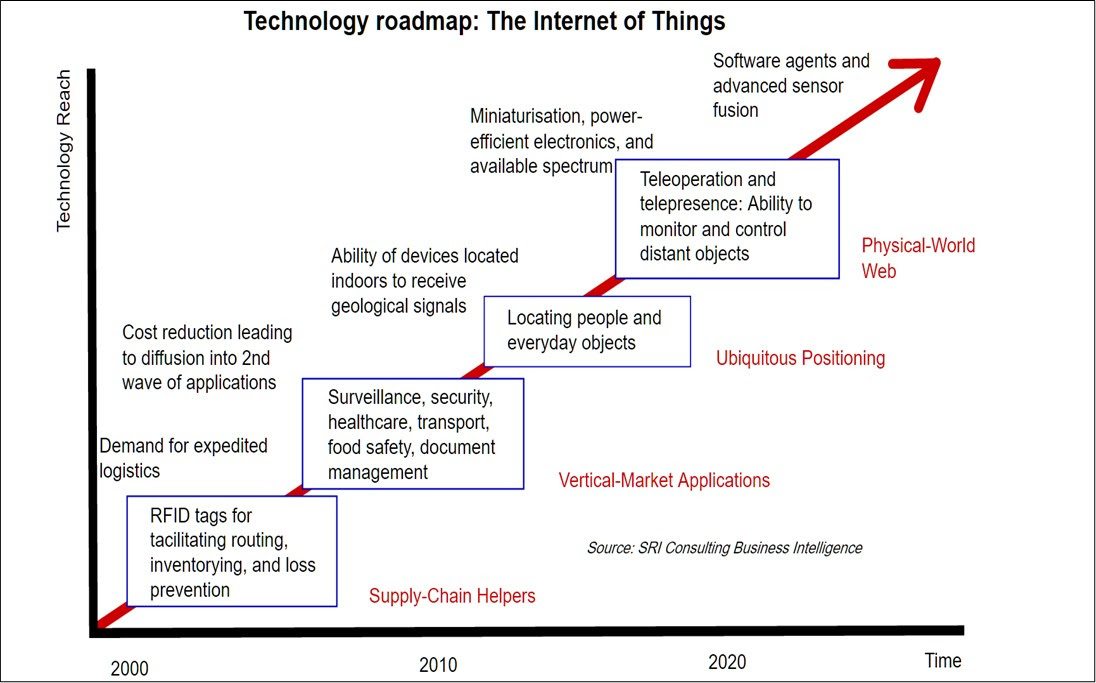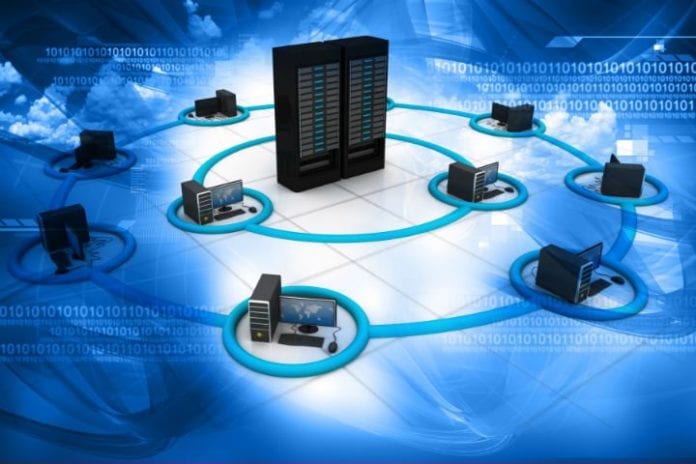The simple answer is “the addition of people.” IoT now has a very broad swath covering many vertical markets as well as consumer embedded.
There’s an old adage in marketing that rapidly expanding markets always segment. A hundred years ago you had the car or automobile, but as the market expanded to cover trucks, buses and other kinds of transportation, the term vehicle came into being that covers all the segments including cars, trucks, buses and all their sub-categories.
About eight to 10 years ago, a new class of mobile was entering the market. It started when some companies began adding wireless modules to meters so that it would eliminate meter readers having to walk from house to house and record the values of the meters, which then got input to the utility company’s computer system, which then generated the bill for the services that was mailed back to the consumer.
When the wireless meter reading modules were added to the utility (water, electricity, gas) meter, the meter could be read and the values sent wirelessly to the utility company, which, again, generated the bill that by now is often paid online. The situation was, therefore, changed from “meter to meter-reader to the utility computer to the bill” to the “meter-to-utility company.” This became known as “machine-to-machine,” which was shortened to “M2M.” This term was quickly adopted for situations in which one machine is communicating with another machine without human intervention.
A number of different M2M solutions were developed using wireless to connect one machine to another machine (often a computer system). Devices inside a factory were converted to send operating data to the company’s production system. A doctor entering a prescription in one computer (often a tablet) ended up sending it to the patient’s pharmacy. Basically, M2M meant any device (meter, computer) could be set up to wireless transmit data to another machine (typically for processing).
M2M conferences also began or at least M2M sessions or tracks within larger conferences began to appear. M2M was the acronym that was driving the new, hot market in mobile and wireless. The basic idea of M2M is still evolving and growing today. However, M2M has been subsumed by a new moniker that includes both M2M and other things just as vehicle/car 100 years ago.
Some universities began doing research on integrated M2M networks. However, something strange happened: smartphones such as the iPhone and Google-based Android smartphone with people holding them came on the scene in 2007, and became essential to business around 2010. Now, M2M networks had people back in the equation, although in a slightly different manner than when the person was just a meter reader.
Machines generated data that was sent to people with smartphones, which was reviewed and then new data was sent on to still other machines. Now, M2M didn’t really correctly portray what was happening.
British entrepreneur Kevin Ashton coined the term “internet of things” in 1999, while working at Auto-ID Labs. But, the term didn’t become popular until just the last few years. Typically, IoT is expected to offer advanced connectivity of devices, systems and services that goes beyond M2M communications and covers a variety of protocols, domains and applications – including people. The interconnection of these embedded devices (including smart objects), is expected to usher in automation in nearly all fields, while also enabling advanced applications like a smart grid and expanding to the areas such as smart cities.
Here is a figure from SRI Consulting that shows the technology roadmap for IoT. Advances in software will enable the fusion of sensors and agents to add intelligence to the network.

IoT will be around for a long time. It might be subsumed by something else in a few decades, but the acronym will likely be around for a long time because it is such a catchall kind of term.
I’ll throw in one more term that is a new subset of IoT: fog computing. This is the term that’s used when there are so many elements in the network that it looks like a fog of devices and interconnections. I wrote about this earlier this year. A good example is a smart city in which many tens of thousands of sensors and nodes and switches all work together to help the city work more efficiently. The elements represent a fog that has to be managed overall in addition to the individual sub-nodes or smaller, special purpose sub-networks.
Thus, it should be easier to now understand how M2M migrated over time to become IoT. You’ll still see references to M2M when it is a focused effort of communication between two machines or a small network of machines. However, IoT has become the mainstay for most all connectivity between a network, often including people with smartphones in the mix.
AOTMP perspective
It is important for enterprises to seriously consider IoT opportunities, even if you think that your company doesn’t have a need. You’ll soon realize that most companies have the opportunity to collect data from sensors of some sort and then utilize that information using IoT methodologies to provide feedback that, in the end, helps the company run more efficiently.
In some cases, a deployment of sensors – even possibly an app on your smartphone – will generate a lot of information. As a result, it may take big data resources in order to make good use of the information. A hospital might collect heart rate data from a number of patients and, from that large amount of information, glean ways to recognize problems quicker and improve patient treatments.
While IoT may just be a buzzword today, it is quickly yielding methods that are helping organizations run more effectively or launch a new line of business. I’ll be writing more about many IoT topics in the weeks and months to come.

Dr. Gerry Purdy is Principal Analyst with Mobilocity LLC. He writes a weekly column called the Mobilocity newsletter. He is widely quoted in the press, and has appeared on a number of TV news shows such as MSNBC, Fox Business and CNN regarding mobile and wireless products. Purdy has a Ph.D. from Stanford University, an M.S. From UCLA and a B.S. from the University of Tennessee. Contact: Gerry.Purdy@aotmp.com, mobile 404-855-9494.
Editor’s Note: In the Analyst Angle section, we’ve collected a group of the industry’s leading analysts to give their outlook on the hot topics in the wireless industry.

